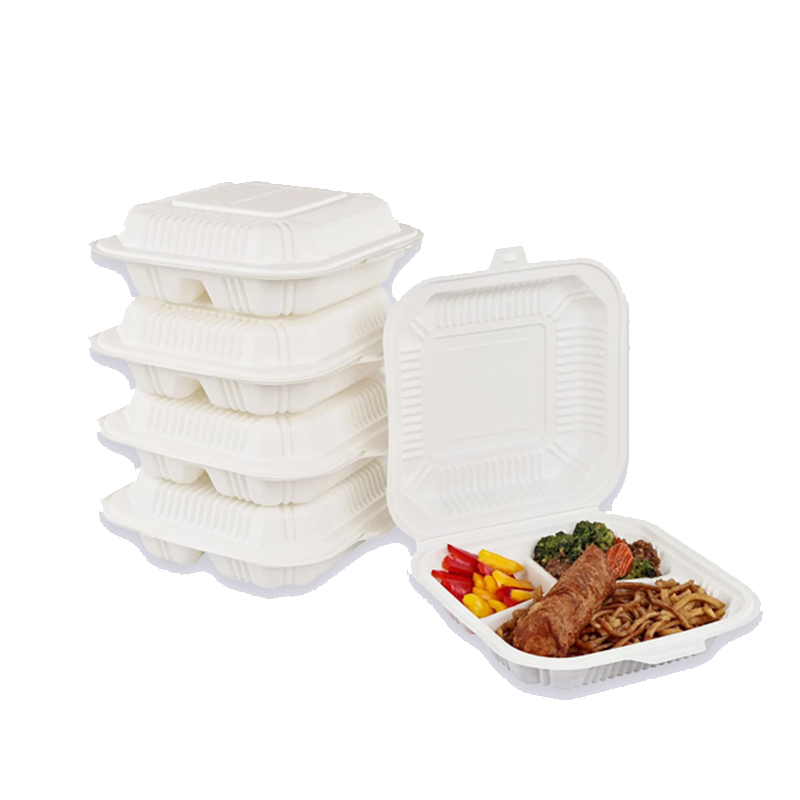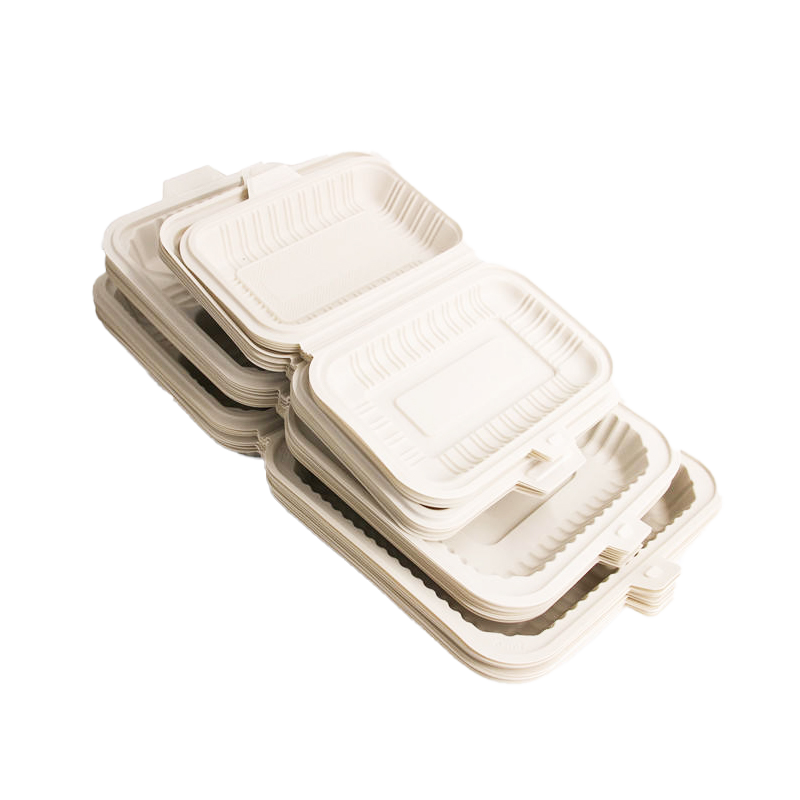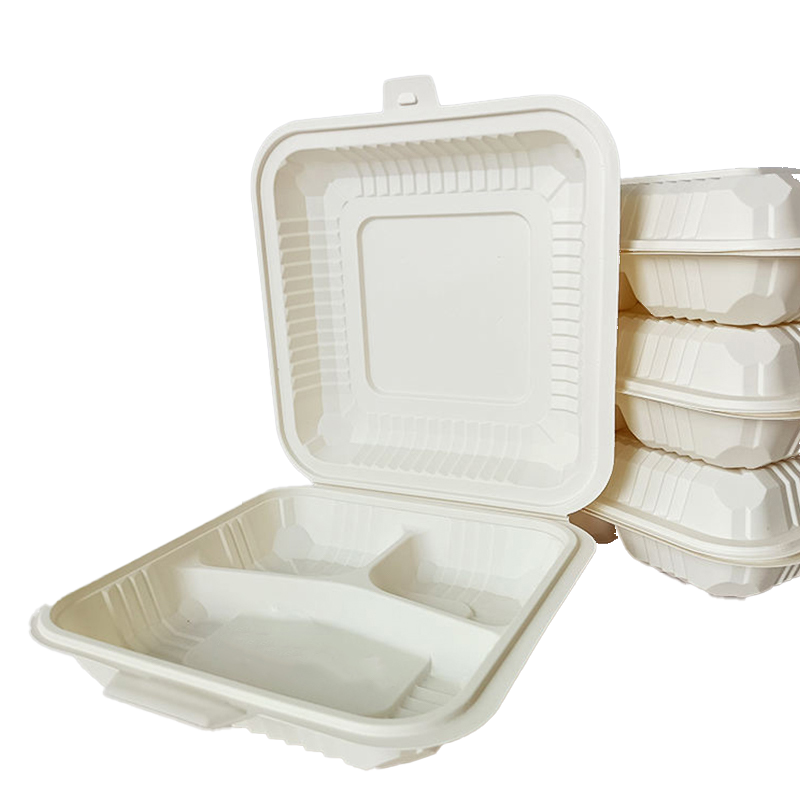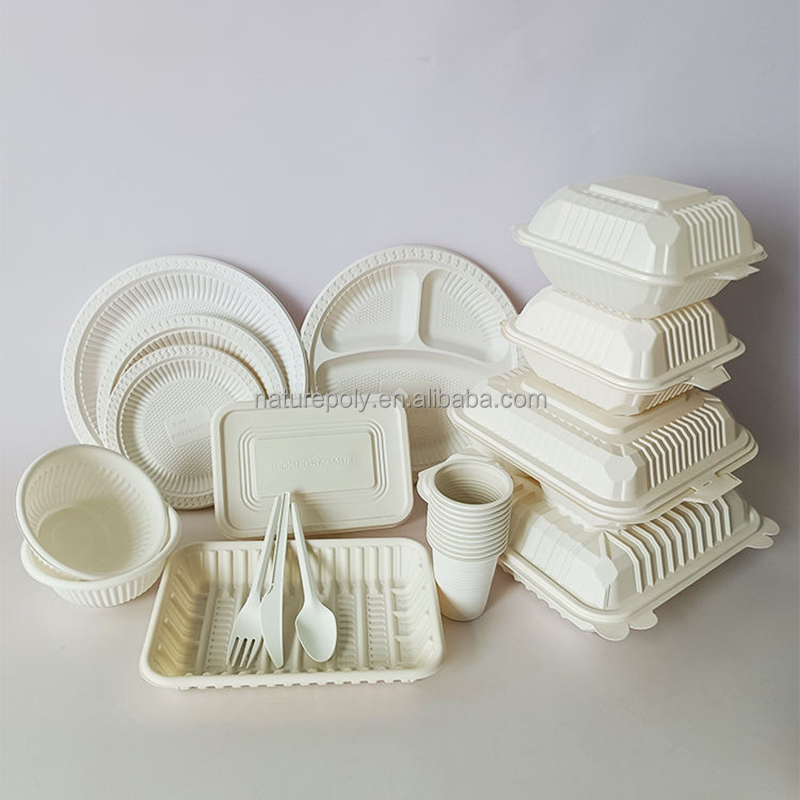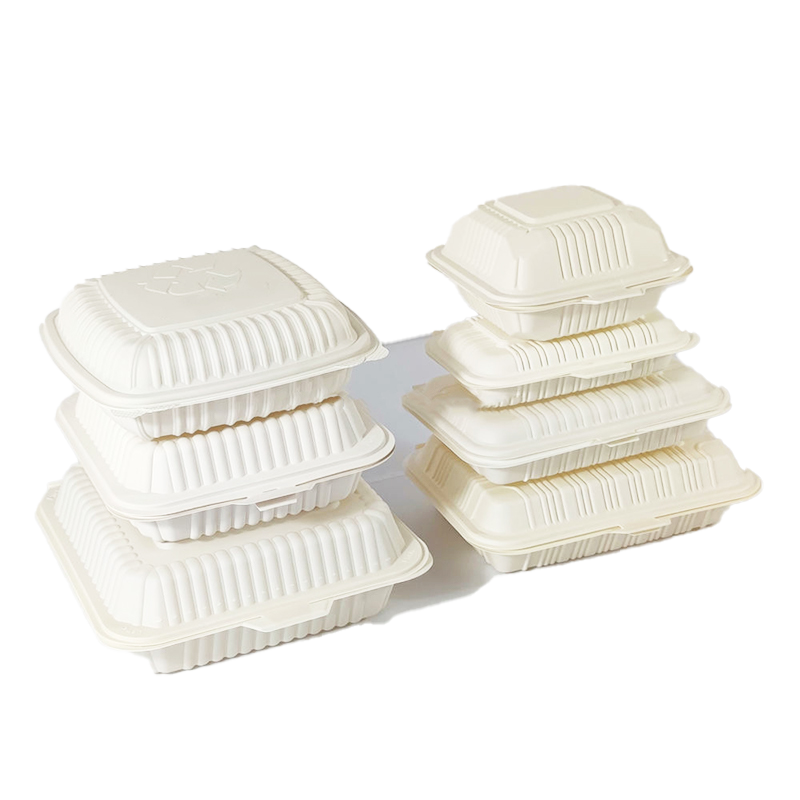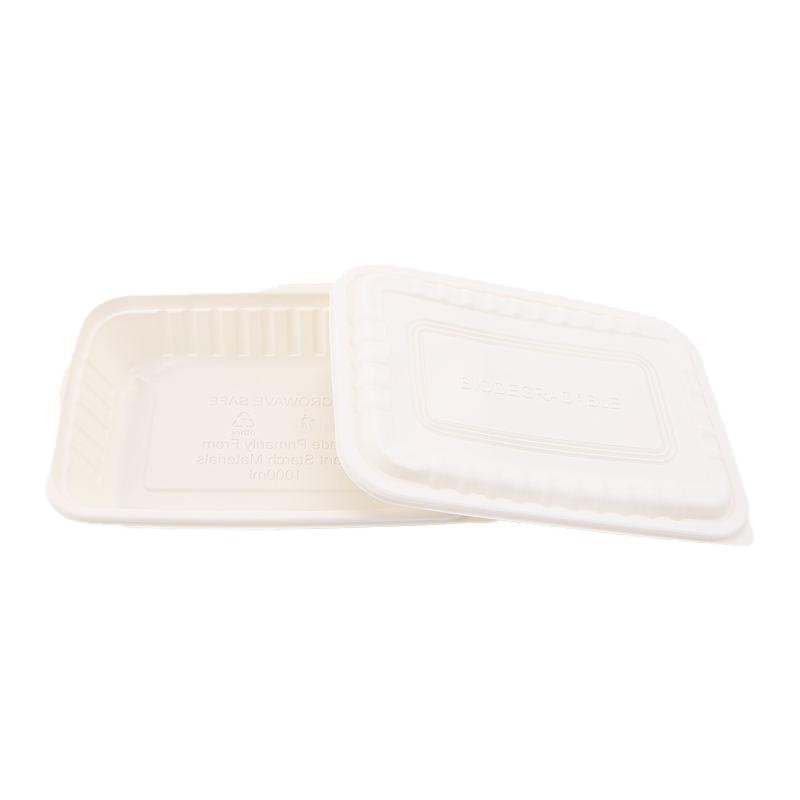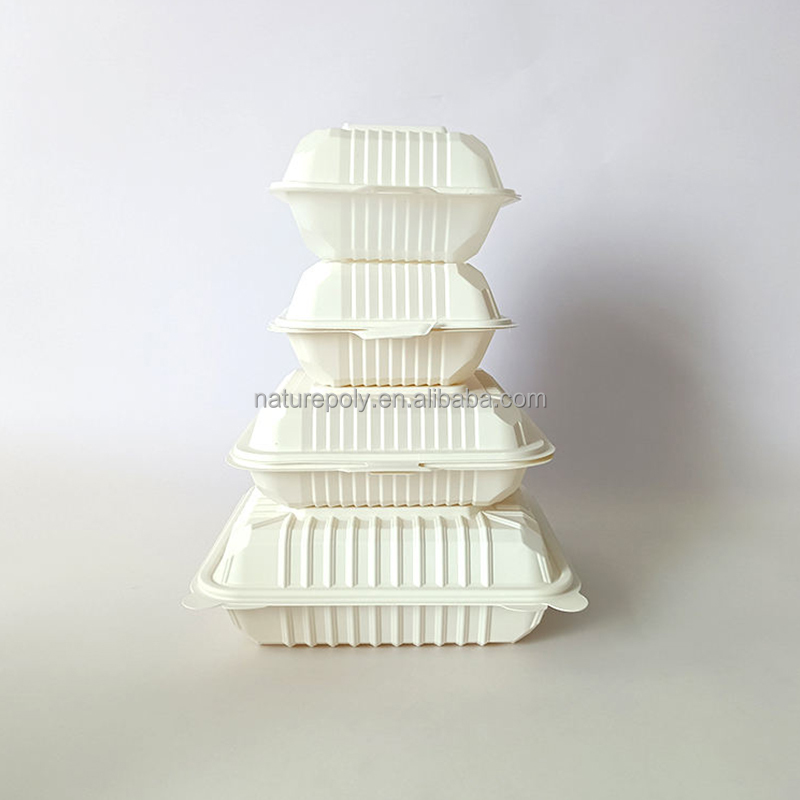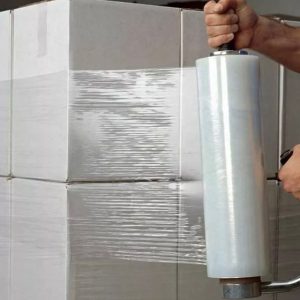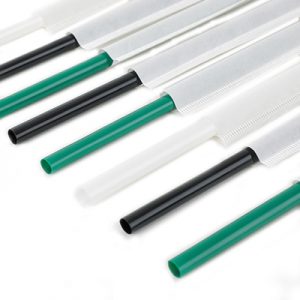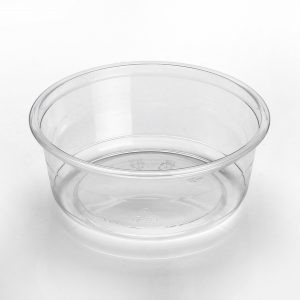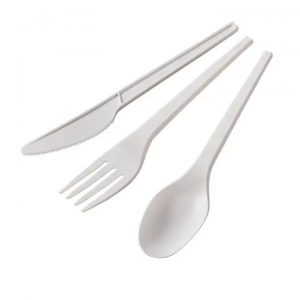| Product name | CPLA Disposable Lunch Box |
| Shape | clamshell |
| Capacity | 1-3L |
| Food Container Feature | Freshness Preservation, Heatable, Microwavable, PORTABLE |
| Material | CPLA |
| Size | 17-54OZ,Custom |
| Number of Tiers | Single Tier |
| Lattice Quantity | 6 and above |
| Use | Food Packaging |
| OEM/ODM | Accepptable |
| Sample | Avialable |
| Packaging Details | 50pcs/bag |
Product Characteristics:
Eco-Friendly Material: CPLA is a biodegradable and compostable material derived from renewable resources, such as corn starch or sugarcane. It offers a sustainable alternative to single-use plastic lunch boxes, reducing the environmental impact.
Safe for Food Contact: CPLA is FDA-approved and free from harmful chemicals like BPA, phthalates, and PVC. This ensures that the lunch box is safe for storing and carrying various types of food, including hot and cold items.
Sturdy and Durable: CPLA lunch boxes are designed to be strong and durable, providing reliable protection for your food during transportation. They can withstand different temperatures and resist leaking, making them suitable for different types of meals.
Versatile Design: CPLA lunch boxes come in various sizes and compartments to accommodate different meal portions and food combinations. They often feature separate compartments for main dishes, sides, and sauces, allowing you to keep your meal organized and prevent mixing of flavors.
Microwave and Freezer Safe: CPLA lunch boxes are microwave-safe, allowing you to conveniently heat your food without transferring it to a separate container. They can also be used for storing food in the freezer, making them suitable for meal prepping and preserving leftovers.
Easy to Use and Transport: CPLA lunch boxes are designed for convenience. They often come with secure lids that prevent spills and leaks during transportation. Some models may include built-in handles or stackable designs, making them easy to carry and store.
Disposable and Compostable: CPLA lunch boxes are intended for single-use, reducing the need for cleaning and maintenance. After use, they can be disposed of in composting facilities, where they will break down naturally without harming the environment.

